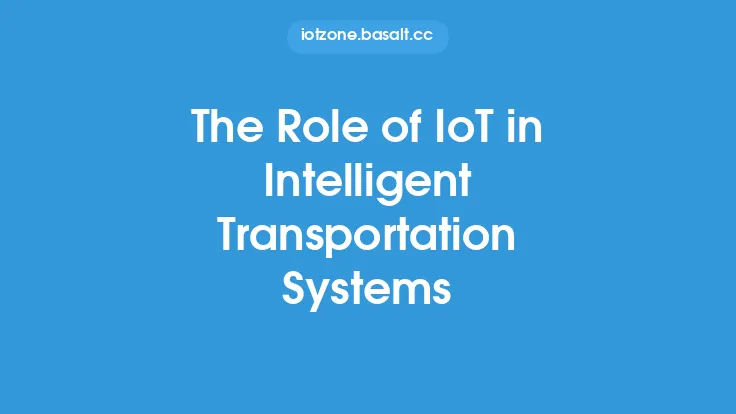The increasing use of Internet of Things (IoT) technologies has transformed the way cities and communities approach public safety and security. By leveraging a network of connected devices, sensors, and data analytics, IoT has enabled authorities to respond more effectively to emergencies, prevent crimes, and improve overall community well-being. This article will explore the various ways in which IoT is improving public safety and security, and examine the benefits and challenges associated with its adoption.
Introduction to IoT in Public Safety
IoT in public safety refers to the use of connected devices and sensors to collect and analyze data, which is then used to inform decision-making and improve response times. This can include everything from smart streetlights and traffic management systems to emergency response systems and crime prevention technologies. By harnessing the power of IoT, cities and communities can create safer, more resilient environments for their citizens.
Applications of IoT in Public Safety
There are numerous applications of IoT in public safety, including:
- Intelligent Transportation Systems (ITS): IoT sensors and cameras can be used to monitor traffic flow, detect accidents, and optimize traffic signal timing. This can help reduce congestion, lower the risk of accidents, and improve emergency response times.
- Smart Streetlights: Energy-efficient LED streetlights can be equipped with sensors and cameras to detect crimes, monitor pedestrian traffic, and provide real-time data to law enforcement agencies.
- Emergency Response Systems: IoT-enabled emergency response systems can quickly alert authorities to emergencies such as fires, natural disasters, or medical emergencies. These systems can also provide critical information, such as the location of emergency responders and the status of emergency equipment.
- Crime Prevention: IoT sensors and cameras can be used to detect and prevent crimes, such as burglary, vandalism, and assault. For example, motion sensors can be used to detect suspicious activity, while license plate readers can be used to track stolen vehicles.
Benefits of IoT in Public Safety
The benefits of IoT in public safety are numerous and well-documented. Some of the most significant advantages include:
- Improved Response Times: IoT-enabled emergency response systems can quickly alert authorities to emergencies, reducing response times and improving outcomes.
- Enhanced Situational Awareness: IoT sensors and cameras can provide real-time data and video feeds, giving authorities a better understanding of emergency situations and enabling them to respond more effectively.
- Increased Efficiency: IoT can help automate many public safety tasks, such as monitoring traffic flow and detecting crimes, freeing up resources for more critical tasks.
- Better Decision-Making: IoT data analytics can provide valuable insights into public safety trends and patterns, enabling authorities to make more informed decisions about resource allocation and strategic planning.
Technical Requirements for IoT in Public Safety
The technical requirements for IoT in public safety are significant, and include:
- Sensor Technologies: A wide range of sensor technologies are used in IoT public safety applications, including cameras, motion sensors, temperature sensors, and acoustic sensors.
- Communication Protocols: IoT devices in public safety applications typically use standardized communication protocols, such as Wi-Fi, cellular, or LPWAN (Low-Power Wide-Area Network) technologies.
- Data Analytics: IoT data analytics is critical in public safety applications, where large amounts of data must be quickly processed and analyzed to inform decision-making.
- Cybersecurity: IoT devices in public safety applications must be designed with robust cybersecurity measures to prevent hacking and data breaches.
Challenges and Limitations of IoT in Public Safety
While IoT has the potential to revolutionize public safety, there are also several challenges and limitations that must be addressed. These include:
- Privacy Concerns: The use of IoT sensors and cameras in public safety applications raises significant privacy concerns, particularly if data is not properly anonymized and protected.
- Interoperability: IoT devices from different manufacturers may not be interoperable, which can create challenges for integration and data sharing.
- Cybersecurity Risks: IoT devices in public safety applications are vulnerable to cyber threats, which can compromise data integrity and disrupt critical services.
- Cost and Funding: The adoption of IoT technologies in public safety can be costly, particularly for smaller cities and communities with limited budgets.
Future Directions for IoT in Public Safety
The future of IoT in public safety is exciting and rapidly evolving. Some of the most promising trends and technologies include:
- Artificial Intelligence (AI) and Machine Learning (ML): AI and ML can be used to analyze IoT data and improve public safety outcomes, such as predicting crime patterns and optimizing emergency response times.
- 5G Networks: The adoption of 5G networks will enable faster, more reliable communication between IoT devices, which will be critical for public safety applications.
- Edge Computing: Edge computing will enable IoT devices to process data in real-time, reducing latency and improving response times.
- Partnerships and Collaborations: Partnerships between public safety agencies, technology companies, and community organizations will be critical for driving innovation and adoption of IoT technologies in public safety.
Conclusion
In conclusion, IoT has the potential to revolutionize public safety and security by providing authorities with real-time data, improving response times, and enhancing situational awareness. While there are challenges and limitations associated with the adoption of IoT technologies, the benefits are significant and well-documented. As the technology continues to evolve, we can expect to see even more innovative applications of IoT in public safety, from AI-powered crime prediction to 5G-enabled emergency response systems. By harnessing the power of IoT, cities and communities can create safer, more resilient environments for their citizens, and improve overall community well-being.





